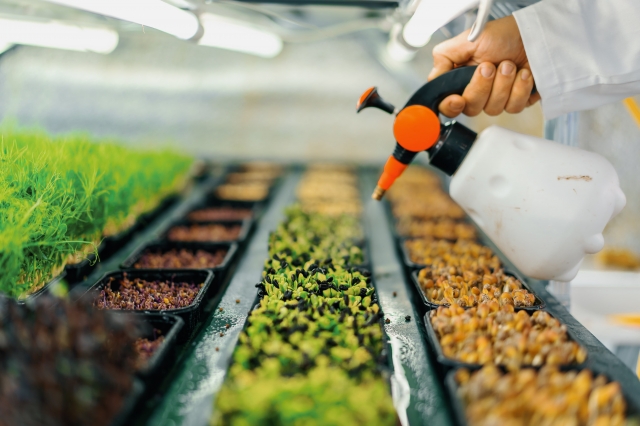Seed development technologies have undergone significant advancements in recent years, revolutionizing the way crops are bred, developed, and cultivated. These innovations have not only improved the efficiency and effectiveness of seed development but have also contributed to addressing global challenges such as food security, climate change, and sustainable agriculture. This article explores some of the key innovations in seed development technologies, their impact on agriculture, and the future of seed technology.
Genetic Engineering
Genetic engineering is one of the most significant innovations in seed development technologies. It involves the manipulation of an organism's genetic material to introduce or enhance desirable traits. In agriculture, genetic engineering is used to develop genetically modified (GM) crops that possess traits such as pest resistance, herbicide tolerance, and improved nutritional content.
One of the key advantages of genetic engineering is its ability to confer traits that are difficult or impossible to achieve through traditional breeding methods. For example, crops can be engineered to produce their own insecticides, reducing the need for chemical pesticides and minimizing environmental impact. Similarly, crops can be engineered to tolerate specific herbicides, allowing farmers to control weeds more effectively.
Despite its advantages, genetic engineering is not without controversy. Concerns have been raised about the potential environmental and health risks associated with GM crops, as well as the ethical implications of manipulating the genetic makeup of organisms. However, proponents argue that when used responsibly, genetic engineering can help to address some of the most pressing challenges facing agriculture today.
Marker-Assisted Breeding
Marker-assisted breeding is another important innovation in seed development technologies. It involves the use of molecular markers to select for desirable traits in plants. By identifying specific markers linked to genes that control traits such as yield, disease resistance, and drought tolerance, breeders can more efficiently select plants with the desired traits and accelerate the breeding process.
Marker-assisted breeding has several advantages over traditional breeding methods. It allows breeders to identify desirable traits at an early stage of plant development, reducing the time and resources required to develop new crop varieties. It also enables more precise selection of traits, leading to crops that are better adapted to specific environmental conditions and agricultural practices.
Seed Coating
Seed coating is a technology that involves applying a thin layer of material to the surface of seeds. The coating can contain nutrients, pesticides, or other substances that help to protect the seed and promote germination and early seedling growth. Seed coating can improve seed quality, enhance crop establishment, and protect seeds from pests and diseases.
One of the key benefits of seed coating is its ability to deliver nutrients and other inputs directly to the seed, where they are most needed. This can improve the efficiency of nutrient uptake and reduce the need for external inputs such as fertilizers. Seed coating can also help to protect seeds from environmental stresses such as drought, heat, and cold, improving seedling survival rates and overall crop yields.
Future Directions
Looking ahead, the future of seed development technologies holds great promise. Continued advancements in genetic engineering, marker-assisted breeding, and seed coating technologies are expected to further improve crop yields, reduce environmental impact, and enhance food security.
One area of particular interest is the development of drought-tolerant and climate-resilient crops. With climate change expected to increase the frequency and severity of droughts and other extreme weather events, there is an urgent need for crops that can thrive in challenging environmental conditions. Genetic engineering and marker-assisted breeding are likely to play a key role in developing these crops, enabling farmers to continue producing food in the face of climate uncertainty.
Another area of focus is the development of crops with improved nutritional content. As global populations continue to grow, there is a growing need for crops that can provide essential nutrients to help combat malnutrition and food insecurity. Genetic engineering and other biotechnologies offer the potential to enhance the nutritional content of crops, ensuring that they can meet the dietary needs of a growing population.
In conclusion, innovations in seed development technologies have had a profound impact on agriculture, leading to higher crop yields, improved food security, and more sustainable farming practices. Genetic engineering, marker-assisted breeding, and seed coating are just a few examples of the technologies that are transforming the way crops are developed and cultivated. As we look to the future, continued innovation in seed technology will be essential for addressing the challenges facing global agriculture and ensuring a secure and sustainable food supply for future generations.






